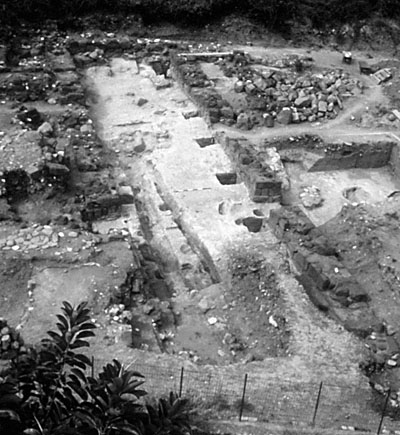
New research on Ancient dockyards and Warships
A Fellow of the Centre has been awarded a generous grant by the Leverhulme Trust for a three-year project entitled "Ship-Sheds in the Ancient Mediterranean", which will use the abundant physical evidence on Mediterranean shores to shed light on the navies of major states such as Athens and Carthage and Rome - and to understand how their fieets of warships were built and maintained.
David Blackman has been a Senior Research Fellow at the Centre since October 2002, when he returned to the UK from Athens after six years as Director of the British School at Athens. He has always had a special interest in ancient maritime history and has long studied the literary and archaeological evidence for ancient warships and military ports; this includes the wealth of epigraphic evidence provided by dockyard records (notably of 4th-century Athens) and naval casualty lists and a varied collection of records of ships and dockyard buildings. He has been carrying out and publishing research on ancient shipsheds for 40 years, inspired as a schoolboy by hearing John Morrison lecture and then as a postgraduate student providing an analysis of the then known remains of ancient shipsheds, notably those in Zea harbour in the Piraeus, which were a key element in the design of the Olympias.

Shipshed 1 at Sicilian Naxos, 2001 excavation
In the ancient Mediterranean world, oared warships were regularly hauled out of the water when not in use and kept under cover to protect the hulls from rot and shipworm, and the superstructure from sun and rain. Remains of both built shipsheds and rock-cut slipways have been identified at a number of sites on the Greek mainland and islands, as well as on the coasts of North Africa, France, Sicily, mainland Italy, Turkey and Israel. The sheds provide evidence of the dimensions of ancient warships, of especial significance since no certain wrecks of ancient warships survive from the Mediterranean.
The project builds on the work of the Olympias project, which used ancient texts, drawings and artefacts to create a reconstruction of the powerful Athenian oared warship, the trireme. The trireme was powered by 170 oars ranked in three tiers and its principal purpose was to chase and ram its opponents.
The research team, including three postgraduate and postdoctoral researchers (Danish, Greek and Swedish), has now started work: they will describe and catalogue shipshed remains and use the evidence to create computerised reconstructions of them. These structures will in turn provide evidence for the design and dimension of different types of ships, and the ways in which they were built and maintained. We thus hope to carry on the work of John Morrison.
The grant was awarded to Royal Holloway, University of London, where the project will be based. The three co-directors of the project are David Blackman, Dr Boris Rankov (Royal Holloway), who is also Chairman of the Trireme Trust and trained the oarsmen of the Olympias during her sea-trials, and Dr Jari Pakkanen (Royal Holloway; formerly Assistant Director of the Finnish Institute at Athens), who specialises in the reconstruction of ancient buildings. Further specialist input will be provided by John Coates, former Chief Naval Architect and Deputy Director of Ship Design at the Ministry of Defence, and the designer of Olympias.
David Blackman, CSAD
Return to Table
of Contents
Home | What's New | Events
| Images | Links
|

